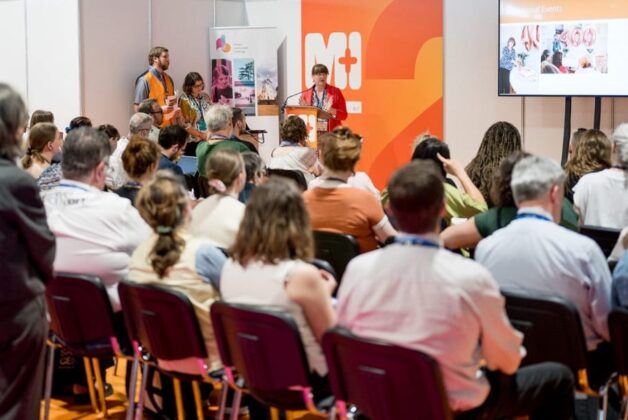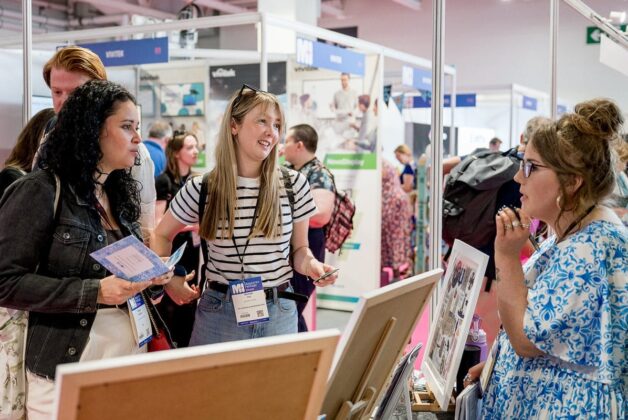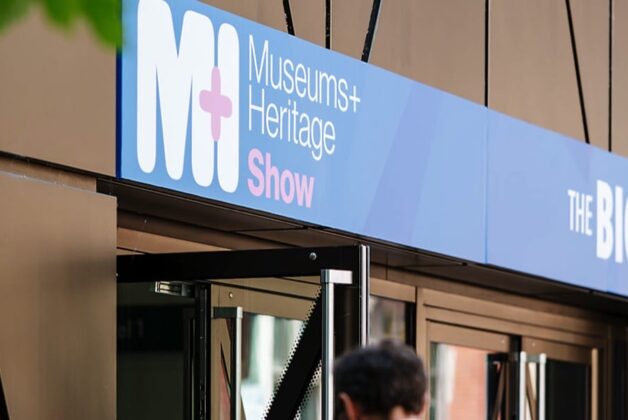Image: Hayley Bray | Words: Alex Rigotti + Alistair Hardaker
The first day included sessions on social media strategy, AI-powered exhibits, a sustainability toolkit for touring exhibitions, and heritage accessibility.
Bringing heritage and arts sectors together
Amongst the many sessions held today was an exploration of how the heritage sector impacts creative industries. Based on a new Heritage Alliance report, Lizzie Glithero-West and Neil Andrews (CEO and Policy and Advocacy Manager of the Heritage Alliance respectively) walked through how heritage sites can boost the creative sector.
Heritage can create the “backdrop for culture creativity”, with Glithero-West citing the Old Naval College as an example. As one of the “UK’s most sought after filming locations”, boasting over 300 credits in films such as Brigderton and Les Miserables, heritage sites like the College “lend credibility and authenticity to productions that can’t always be produced in studios.”
She also spotlighted how heritage sites can act as a gateway for young people to enter into arts industries. Under 10% of those working in film, TV, photography come from a working-class background, whilst arts and culture has been “systematically deprioritised” in education, further reducing opportunities for young people.
But the pair pointed to a recent partnership between Shout Out Loud and the Aardman Academy. The storied production company based in Bristol (who will also be visiting the M+H Show with their own session) collaborated with Bristol’s Temple Church by teaching young children stop motion animation to “bring interpretation of stories of historic sites to life”. During these workshops, young people were encouraged to make art about what they found interesting about the history of the church, with some focusing on aspects like the church’s bombing during WWII.
The partnership extended to three workshops at four English Heritage sites, and by the end, children reported walking away with their “confidence increased” and learning “new skills”.
The pair also discussed how heritage sites can best align with current Labour government policies. Glithero-West shared that “heritage is in every constituency, so everyone can benefit from this”, and therefore stressed the importance of “putting heritage at the heart of regeneration”.
“Growth is the language of the day,” she said. “It’s the conversations governments are having as their main priority. We want to see heritage front and centre of those investment programmes and integral to new towns and placemaking”. She pointed to the government’s current target of creating 1.5million houses, arguing that repurposing heritage buildings could create between 560,000 and 670,000 of those homes: “We need to be creative and not start from scratch. Heritage is not a blocker, it’s an enabler”.
Explore, Engage, and Connect – Meet Bloomberg Connects at M+H Show
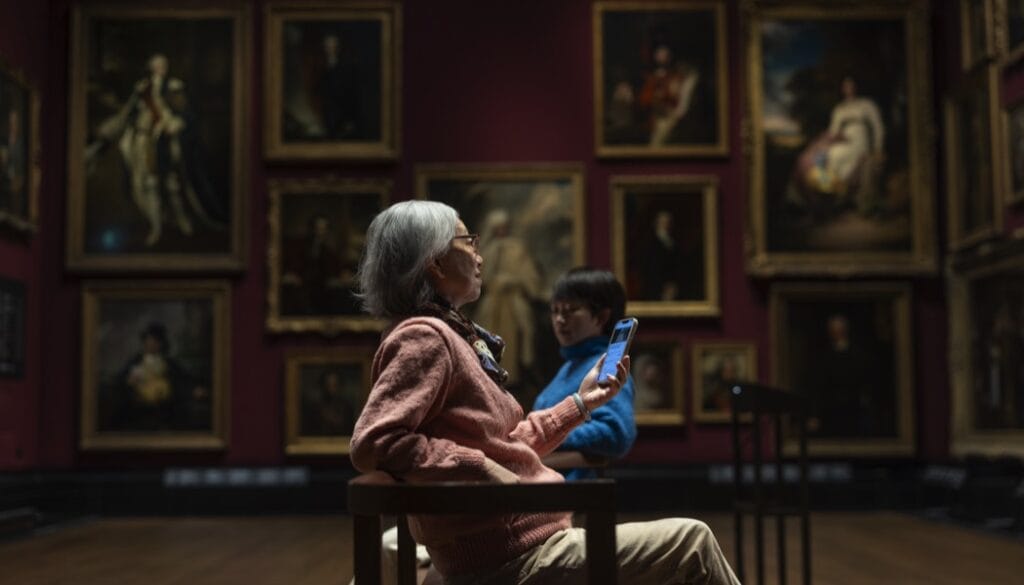
We’re thrilled to be at the Museums + Heritage Show as a sponsor, showcasing Bloomberg Connects, the free digital guide that helps museums, galleries, and cultural sites engage audiences with rich digital content. Our platform is part of Bloomberg Philanthropies’ longstanding commitment to supporting digital innovation in the arts. Bloomberg Connects provides exclusive multimedia guides, artists’ voices, and behind-the-scenes perspectives that offer insight into exhibitions and collections – expanding access to arts and culture around the world. Whether you’re here in person or following from afar, here’s how you can connect with us:
Visit Our Booth
If you’re attending, stop by our booth tomorrow to experience Bloomberg Connects first-hand. Our colleagues will be onsite to demonstrate how the app enhances visitor engagement, with interactive content, accessibility features, and multilingual options. Devices will be available so you can explore existing guides. Chat with us to learn how your organisation can benefit.
Earlier at the trade show, we hosted a panel discussion featuring insights on how digital innovation is transforming the cultural sector, making arts and heritage more accessible than ever. If you missed it, there’s still plenty of opportunity to ask questions and learn more about our offering—just visit our booth.

Not at the Show? Stay Connected.
Bloomberg Connects is available to cultural organisations worldwide, helping you reach new audiences through free, interactive digital guides. Explore our work and find out how to partner with us here.
Come say hello, experience the app, and be part of the conversation on the future of digital engagement in the cultural sector. See you tomorrow!
Rethinking sustainability
Sustainability was another key issue explored in sessions today, and the ‘Rethinking Touring Exhibitions’ toolkit is helping museums to become more environmentally friendly. Produced with the help of The Exhibitions Group in partnership with the Art Fund and the Design Museum, Dana Andrew helmed this session today, noting how there “is very clear research that says the audience is interested in what we are doing to reduce environmental impact – so let’s find a way to give them that”.
Andrew highlighted how exhibitions should start “moving away from bespoke” design by designing exhibitions for reuse from the start, along with sourcing locally and planning for the exhibition’s end of life.
She also stressed the importance of the toolkit’s flexibility, noting that this was a barrier often faced when speaking with smaller museums looking to increase sustainability. Pointing towards local authority museums, Andrew said these institutions often “found it a challenge” as “responsibility for environmental impact might have been with a person who might not have been connected with the museum or culture side of things”, adding that “they had processes that weren’t very flexible, or might have to use particular tools – so they were finding it challenging to align with that.”
“That’s why you’ll see in the toolkit, there’s no ‘you must do this’”, she continued. “We found the only way things were gonna happen and change is for organisations to figure out what they actually could do. You just need to do what you can do, and that might look different to what another similar sized museum is doing because of their governance model or other factors.”
She also spoke about the heritage sector’s reluctance to embrace sustainability, acknowledging the “dual responsibility” of implementing more eco-friendly practices whilst also upholding professional standards for collection care.
“We’re so diligent about doing things the right way,” she said, adding that “it’s really challenging when you view that professional responsibility to be moving away from that in a way that might be viewed as potentially taking less care of collections.
Andrew thus encouraged audiences to “do even small things… then we can create collective change”.
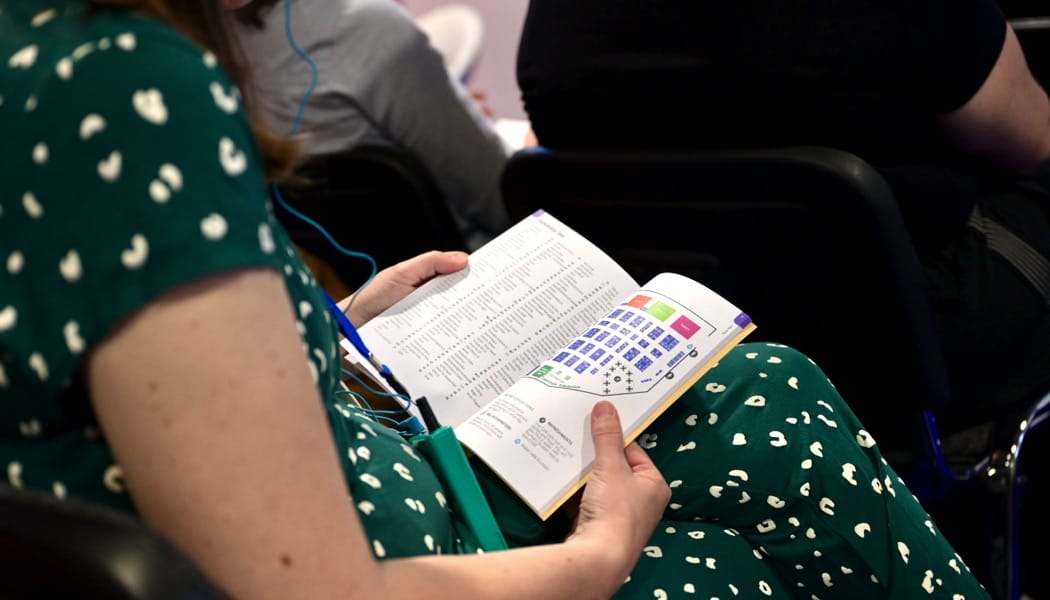
Helping heritage sites become more accessible
Finally, Historic England led a session exploring how heritage sites can become more accessible for disabled people both within and outside the sector. Led by Senior Inclusive Heritage Adviser Pen Foreman and Head of Inclusive Heritage Sean Curran, they announced the publication of a brand-new report examining the experiences and demographics of disabled people within the sector today.
Foreman explained that “we want to look at careers and jobs, volunteering and participation, and use that information to develop strategy” to create “better opportunities around all three areas” within the next “5-10 years”.
They went on to note a large number of disabled people said they did not engage with the sector at all, with 40% of people with disabilities reporting they never engage with heritage compared to 28% non-disabled people. In the report published today, 41% of responders often said sites were either “only accessible by car”, or that they were “unable to drive due to poor vision”.
The importance of providing adequate visitor information beforehand was also emphasised in the session – especially for older heritage sites. “Don’t try and sell it as an equal experience, just have access information,” Foreman advised. “You may think a building is accessible, but a disabled person can make that call.”
They suggested “really clear, easy-to-follow, sensory maps” that gave information about factors such as the “physical site”, along with the “smell” and “sound” of the building.
Meanwhile, Foreman also discussed why disabled people left the heritage industry. Whilst 40% retired, 40% reported moving sectors due to inaccessibility, whilst 20% left due to health issues. They also noted a “real lack of training given to employees”, but also “low empathy” for disabled people, with Foreman reasoning: “People don’t know disabled people, or they think they don’t know, so they can’t conceptualise it in a way that humanises them.”
Instagram, X, TikTok… now what?
A panel exploring the future of social media use in museums — chaired by digital strategist Linda Spurdle — considered how best to allocate resources and the importance of ‘getting weird’.
Joe Vaughan, marketing manager at the Museum of English Rural Life (MERL), advised that organisations should focus on doing one or two types of content well — in MERL’s case, jokes.
The museum’s digital marketing team enjoys comedy writing, and “it was quite natural for us to lean into jokes,” Vaughan said.
Katy Farrell, social media tech champion at the Digital Culture Network, agreed.
“If you don’t have high resources — which is true for all museums — pick what you feel you can do well and get buy-in from management,” said Farrell. “You don’t have to be on every platform… you don’t need to post on every platform every day.”
Posting once a week, Farrell said, is “totally fine” — so long as the focus is on platforms that offer a good return on time invested.
Success, Farrell suggested, is more likely to come from organisations “being 100% themselves and a little bit weird.”
Social media shouldn’t be the entire marketing funnel, Farrell added: “It’s not great at getting people to buy a ticket or something from your shop.” Going viral “won’t fill your museum” — but it can be a powerful tool for honest expression.
Cherelle Cunningham, head of marketing and audiences at MK Gallery, also spoke of the importance of creative freedom. Social media teams, Cunningham said, “need to have a place to be experimental” — though securing buy-in from leadership remains a challenge.
The panel agreed that time spent on social platforms should be recognised as a valuable part of the role, essential to building meaningful engagement. As Farrell put it: “Scrolling time is not wasted time.”
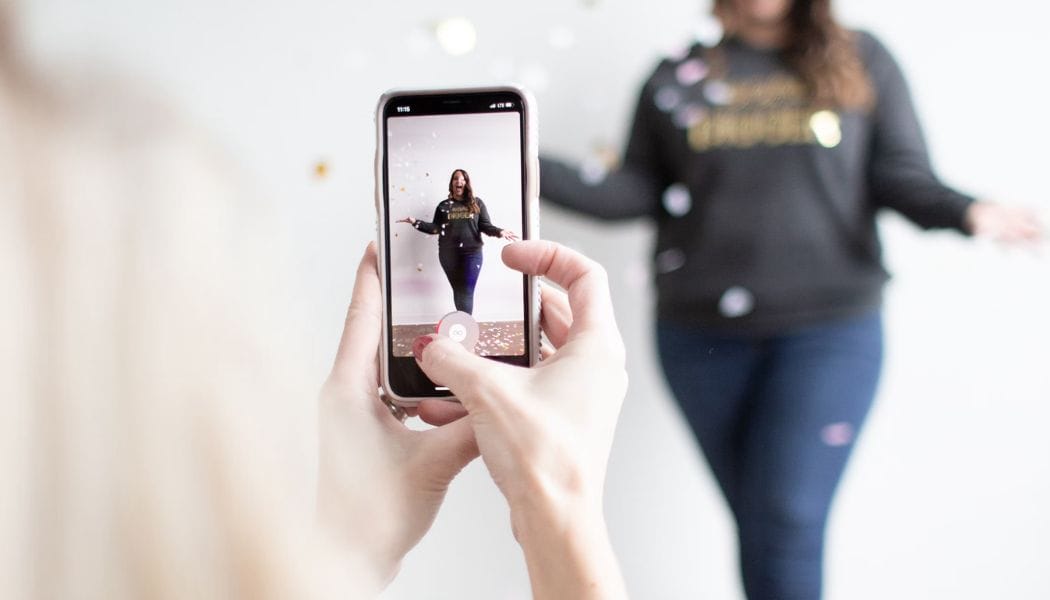
Vaughan recommended looking to big brands for evidence that creative risks can pay off. “Duolingo killed their mascot,” Vaughan said — pointing to it as an example of weird or risky content that resonated. “If they can do it, museums can do it too.”
Farrell highlighted the increasing demands placed on marketing professionals, who are often expected to maintain a presence across seven or eight platforms — even when social media is only a small part of a broader role.
Keeping up with platform trends is already time-consuming, and the ethical considerations of remaining on certain platforms add further complexity. The panel agreed that these questions should be an intentional part of strategy.
“Most of the large social media platforms have ethical issues at their heart,” Vaughan said. “We’re all making ethical choices and compromises every single day.” Rather than ignoring that reality, Vaughan suggested being explicit: “What compromises are you willing to make?”
The platforms a museum or gallery chooses to use can send a message in themselves. “Museums are protagonists in legitimising social media,” said Vaughan. Platform choices can reflect an organisation’s values.
Cunningham recommended defining those values on paper — to make such decisions easier.
Even if an organisation has no plans to join the latest platform, the panel advised securing an account and handle to avoid losing control of the name. Farrell warned that not joining — or temporarily leaving — could allow others to claim the handle.
‘I am a dodo’ AI-powered conversations with exhibits
The University Museum of Zoology in Cambridge, in partnership with Nature Perspectives, has piloted an AI tool that allows visitors to ‘talk’ with museum specimens.
Since November, visitors have been able to scan QR codes to engage with chatbots designed to respond in the first person, as the animal or object they represent. Dodos, red pandas — even trees — can ‘speak’ with users.
Assistant Director Jack Ashby introduced the project at the Museums + Heritage Show, describing it as a way to “democratise label information” without being limited by space.
This is believed to be the first time AI has been used to let visitors interact with specimens from a first-person perspective.
Nature Perspectives, the company behind the technology, has developed a system that creates a ‘Digital Mind’ for each specimen. This mind draws on factual information about the object and its history, while adapting to factors such as time of day, visitor age, and language.
The #MandHShow will arrive at @olympiaeventsuk next Wednesday! Have you got your tickets yet? 🎟️
In the words of @DominicJonesUK – "This is the sort of show that you have to attend in person. The value of attending in person is so high. You get to network with friends, you get… pic.twitter.com/Fv3WOeSGzQ
— Museums + Heritage Show & Awards (@MandHShow) May 6, 2025
Ashby, initially sceptical, said that conversations quickly progressed beyond simple factual exchanges to discussions of personality, opinion, and topics like extinction and cloning.
More than 3,000 conversations have now been recorded — with over 100 visitors continuing interactions beyond the museum walls.
Still, the project raises new ethical questions. “Is it ok to give a kangaroo from Australia an Australian accent?” Ashby asked.
Palit from Nature Perspectives noted that while the AI is designed to follow visitor prompts, it always brings the conversation back to nature. “If it’s asked about a new movie release, it’ll answer — but then it moves on. It will always find a way to bring the conversation back to nature.”
The AI is also able to change its opinions, prompting further questions about messaging and interpretation. “Will talking to a cockroach make people more fond of cockroaches?” Palit asked. “Does being extinct — a skeleton — make people less likely to engage?”
To assess these questions, staff can evaluate metrics such as learning opportunities, emotional responses, and visitor interests using a dedicated dashboard. The system even measures its own accuracy using further AI, cross-referencing museum-provided information and presenting this as a percentage.
According to Palit, factual accuracy is currently rated at 99%. However, “inferred information — where there’s an implied piece of knowledge — is harder to test.”
Ashby said the team is “perfectly comfortable” using the AI with natural specimens, but that further consideration will be needed for collections involving people or historic figures.
When asked about the environmental impact, Palit said each conversation uses about as much energy as sending an email. As usage scales, so will energy consumption — but the goal is to remain nature-positive in content and to encourage users to be more nature-conscious.
Missed out? The show’s not over...
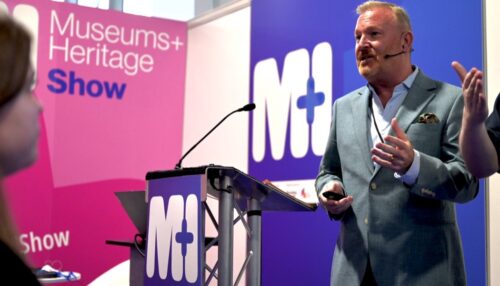
Register for Day 2 at the Museums + Heritage Show
This is the final opportunity to register for a ticket for the second day of the Museums + Heritage Show, taking place today, 15th May 2025 in London.


